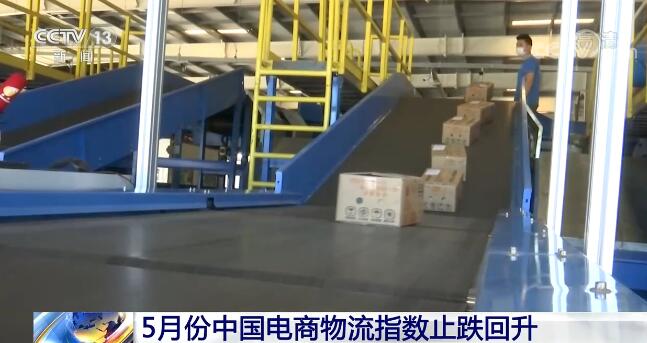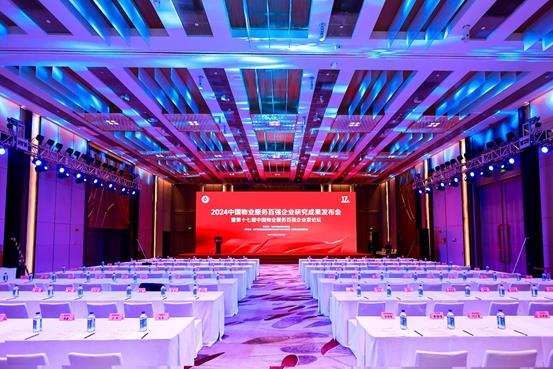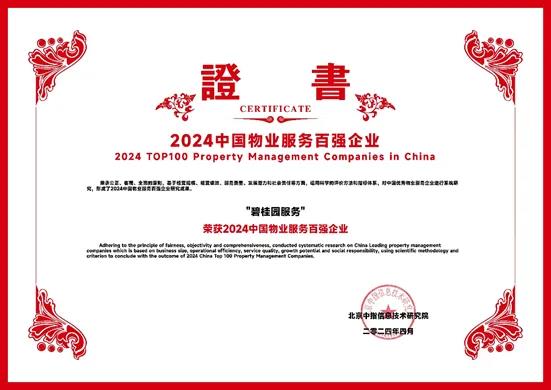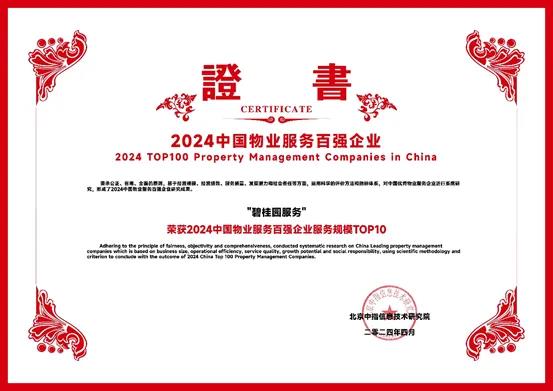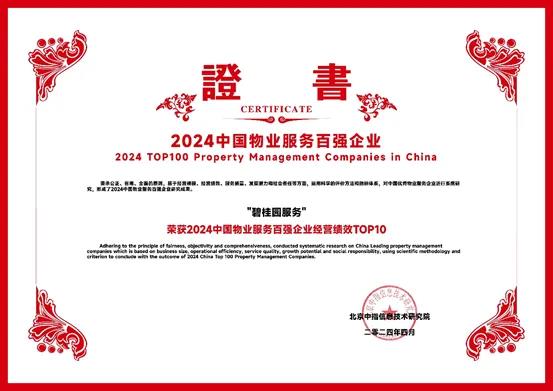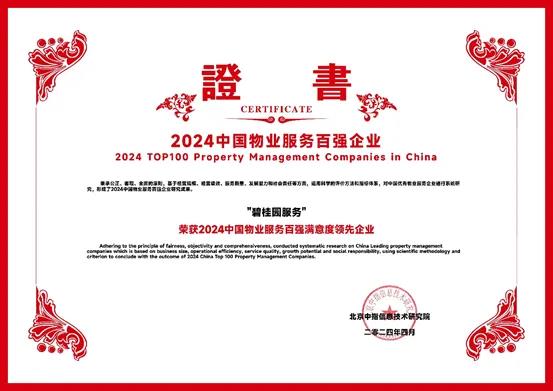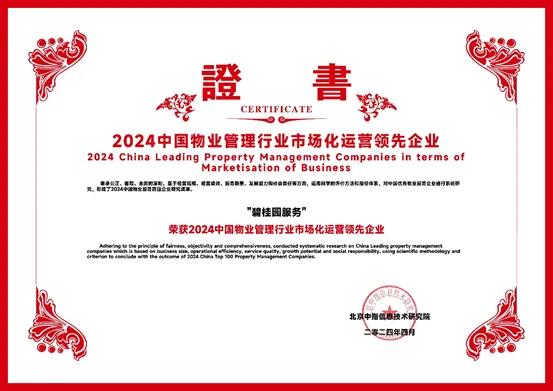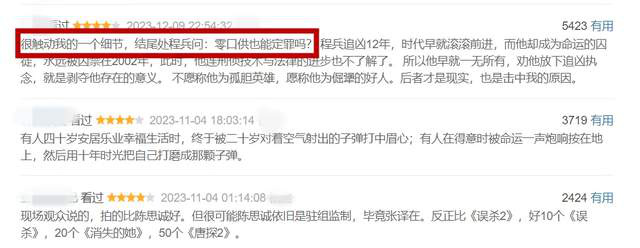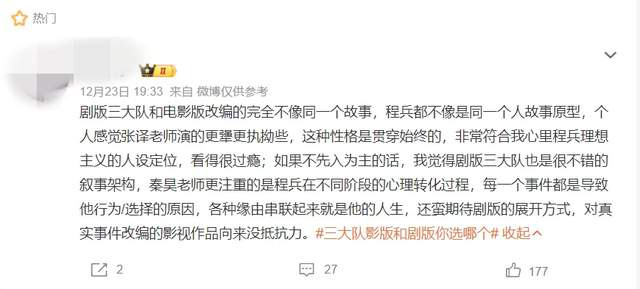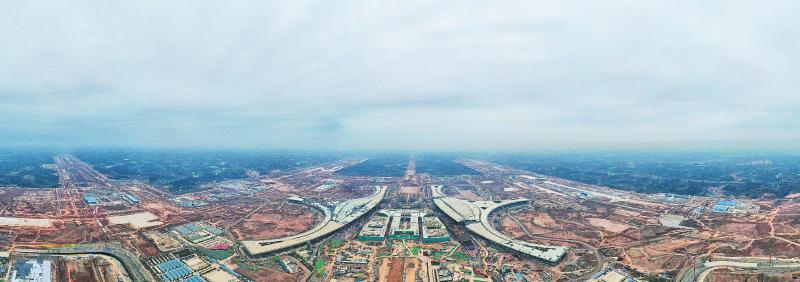
Image source @ vision china
Wen Yi Zheng Lun
In the farming era, agriculture is the foundation of the country. Entering industrial civilization, although agriculture accounts for less and less of the total economic output, it is an important foundation of all industries, and agriculture has a multi-layered relationship with modern economic development.
Taking China as an example, China’s economy, especially after the reform and opening up, has experienced sustained high-speed growth for 40 years. In this process, two topics have become the focus of academic circles and public opinion: one is the sustained growth for 40 years (including the high-speed growth in the first 30 years and the medium-high-speed growth in the second 10 years), which has been praised as the "China miracle" by many scholars and given different explanations from different angles.
The second is the trend of slow growth in recent ten years, which is accompanied by the retreat of late-comer advantage, the disappearance of demographic dividend, the slowdown of urbanization and the anti-globalization trend, which makes many people feel anxious.
If we examine the logic behind China’s economic development from the perspective of agriculture, we may be able to reduce our anxiety in the face of slowing economic growth and get a peek at the opportunities for future economic development.
review
Generally speaking, agriculture has two meanings for economic development: the first is the primary industry in economic growth-agriculture, but the proportion of the added value of primary production in the total GDP will become smaller and smaller with the process of national industrialization; Secondly, from the perspective of development economics, the development of agriculture is the foundation of population growth, labor transfer and urbanization.
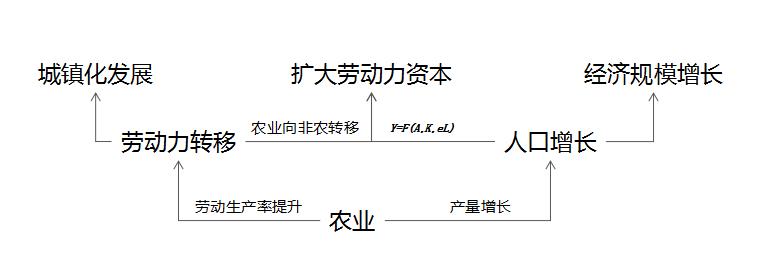
(Illustration: The increase of agricultural output can bring about the increase of population, and the increase of population leads to the expansion of economic scale; The improvement of agricultural labor productivity can transfer more labor to modern industry and commerce and provide labor capital for economic development; Population growth, industrial and commercial development, and more people moving from rural areas to cities have brought about the development of urbanization. )
On the macro level as a whole
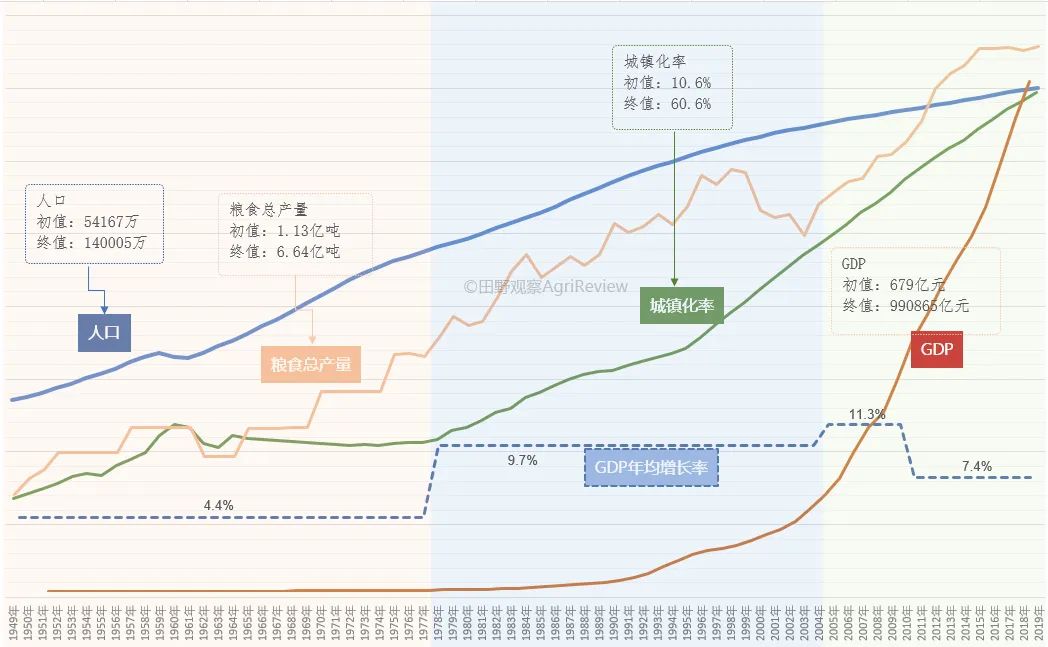
(Statistics of population, grain output, urbanization rate, GDP and growth rate in China from 1949 to 2019-Source: National Bureau of Statistics)
From 1949 to 2019, the annual output of grain in China increased from 113 million tons to 664 million tons; The added value of the primary industry (agriculture, forestry, animal husbandry and fishery, but excluding agriculture, forestry, animal husbandry and fishery services) ranged from 34.3 billion yuan to 7046.7 billion yuan (1952-2019); The population has increased from 540 million to nearly 1.4 billion; Gross national product (GDP) from 67.9 billion yuan to 99,086.5 billion yuan (1952-2019); The urbanization rate ranges from 10.6% to 60.6%. All this is inseparable from the contribution of basic agriculture.
In this process, we have gone from not having enough to supplying by ticket, to solving the problem of food and clothing poverty, and now we have plenty of food and clothing. Great changes have also taken place in our diet structure, from a diet dominated by staple food to a more balanced and scientific diet of grain, fruits and vegetables, meat, eggs and milk.
People’s health status and education level have been greatly improved. The obvious performance is that the average life expectancy has dropped from less than 35 to 77 now, and the illiteracy rate has dropped from 80% to about 5%. Agricultural development not only pushes up the population base, but also provides a high-quality population for economic development, industrial and commercial development and urbanization.
Today, we are the largest agricultural producer in the world, accounting for 20% of the world’s grain output, 39% of the world’s vegetable and fruit output, and 56% of the world’s pigs. We feed 21% of the world’s population with less than 9% of the earth’s arable land, and the food self-sufficiency rate is 82.3%(2017).
The above is the overall view. Since the founding of the People’s Republic of China, China has experienced several different historical periods. The political and economic systems in each period are not only the same, but also the agricultural and economic development have different structural models and logical relationships. Therefore, we need to look at the relationship between agriculture and economic development in stages.
Look at it in stages
Professor Cai Fang once divided China’s economic development into five stages: Malthusian trap, Ghilt’s involution, Lewis’s dual economic development, Lewis’s turning point and Solow’s neoclassical growth. We divide and simplify it into three stages to explain the relationship between agriculture, population and economic development respectively.
I From Malthusian Trap to Involution (1949-1978)
At the beginning of the founding of the People’s Republic of China, we just got out of the war. We are a poor and backward agricultural country, and more than 500 million people are facing the situation of not having enough to eat and not being warm. The population situation is that the high birth rate is accompanied by the high death rate, showing a slow growth, that is to say, it is in the Malthusian trap.
Malthusian trap was put forward by thomas robert malthus, a British political economist, and named after it. It means that the population growth is in accordance with geometric progression, while the survival resources are only in accordance with arithmetic progression. The extra population will always be eliminated in some way, and the population cannot exceed the corresponding level of agricultural development.
We got out of the Malthusian trap on the one hand from the post-war peace, and on the other hand from the food growth brought by agricultural development. After the founding of the People’s Republic of China, although China experienced political movements such as cooperatives, people’s communes, the Great Leap Forward and the Cultural Revolution, our grain output still increased gradually during this period.
During this period, agricultural development was promoted by both agricultural system and agricultural technology.
From the early days of the founding of the People’s Republic of China to 1952, China basically completed the land reform, more than 300 million farmers regained their land, and agricultural production gradually resumed after the war; Subsequently, agricultural production gradually began the movement from mutual aid groups, cooperatives, primary cooperatives, advanced cooperatives to people’s communes. Although from the perspective of system, the influence of system on agricultural development in different periods is both positive and negative, the progress from agricultural technology has obviously promoted agricultural development. Modern agricultural technologies after the industrial revolution: chemical fertilizers, pesticides, improved varieties, irrigation and mechanization (chemical fertilizer industry and mechanization are mainly after the reform and opening up), which have greatly promoted the development of agriculture.
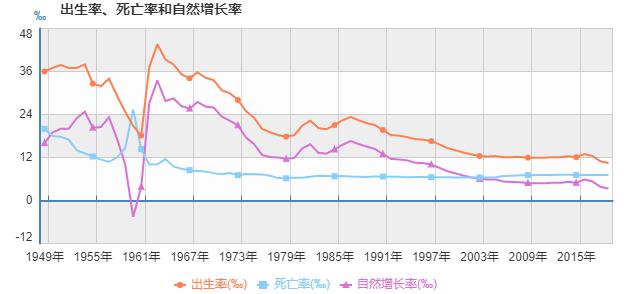
(Illustration: The grain growth brought by agricultural development increases the environmental carrying rate, and with peaceful development, the mortality rate is greatly reduced and the population is growing rapidly. )
The development of agriculture made us get out of the Malthusian trap, and the population increased. However, due to the influence of planned economy, unified purchase and marketing, people’s commune and household registration policy in this period, the increased population did not shift from agriculture to industry and commerce, nor did more people shift from rural areas to cities. The urbanization rate only increased from 10.6% to 17.9% in 30 years.
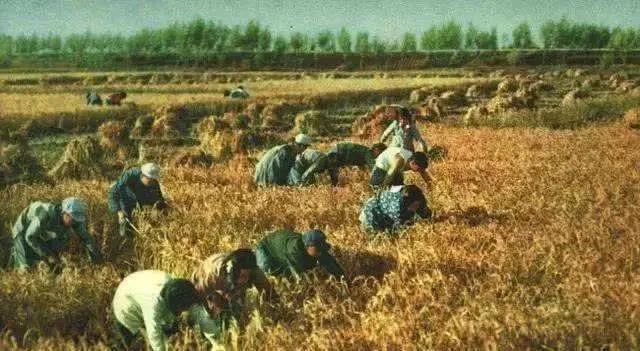
A large number of surplus labors stay in the countryside, forming an involution society.
Involution was put forward by Ghilt, an American anthropologist, when studying Indonesian agriculture. It refers to the phenomenon that a social or cultural model stagnates or cannot be transformed into another advanced model after reaching a certain form at a certain stage of development.
Huang Zongzhi used the concept of involution in the study of China’s economic development and social changes in "Small Farmers’ Families and Rural Development in the Yangtze River Delta". He called the growth without development "involution" by investing a lot of labor on limited land to obtain the way of total output growth, that is, the way of diminishing marginal benefits.
A large number of surplus labor stranded in rural areas in the involution stage will become an important resource in the following dual development stage.
II Lewis’s dual economic development stage (1978-2004)
In 1978, China began to reform and open up, and changed from a planned economy to a socialist market economy. Since then, China’s economy has embarked on a long-term high-speed growth channel, with high-speed industrial and commercial development and increasing urbanization rate. In this process, a large number of surplus laborers stranded in rural areas during the involution period were released, and they entered cities and towns from rural areas, and entered industry and commerce from agriculture, which became the main driving force of economic development and formed a dual high-speed development model. This model lasted until around 2004, and entered the next stage of development with the arrival of lewis turning point and the disappearance of the demographic dividend.
Dual Economic Model and lewis turning point;
Dual economic model was put forward by British economist Lewis, which means that developing countries coexist with two different economic systems: traditional agricultural economic system and modern industrial system, which is called dual economic structure.
In the dual economic model, the traditional agricultural sector has a large number of surplus labor with zero marginal productivity, and the surplus labor is continuously transferred from the agricultural sector to the industrial sector.
When the surplus labor force is completely transferred, it is the first turning point of Lewis. After the transfer of surplus labor force, the labor force began to be in short supply. However, because the marginal productivity of the industrial sector is still greater than that of the agricultural sector, it will continue to absorb the labor force of the agricultural sector, but the wage level will continue to increase until the marginal productivity of the two sectors is equal, forming a labor market integrating urban and rural areas. At this time, it is Lewis’ second turning point.
The development of agriculture in this period is reflected in two aspects: system reform and technological progress. The landmark event of China’s reform and opening up was the "all-in-one contract" in Xiaogang village in 1978. The household contract responsibility system began to gradually replace the people’s commune, which improved the incentive mechanism and mobilized the enthusiasm of farmers.
The system reform has brought about the improvement of production efficiency and output. Professor Lin Yifu said that 47% of the increase in agricultural product output comes from the improvement of incentive mechanism by household contract system. In terms of system, it also promoted the development of agriculture by abolishing the state monopoly on purchase and marketing (gradually abolished in the mid-1980s), and land circulation (starting in 2002) further increased the mobility of factors.
In terms of technology, industrialized agricultural technologies such as chemical fertilizers, pesticides, improved varieties and mechanization have further promoted agricultural production and income. In this stage of agricultural industrialization and modernization, agricultural development and industrial development promote each other.
According to the production and use of chemical fertilizers, there were only a few chemical fertilizer plants in China before the reform, and the annual chemical fertilizer output was only a few million tons, and now it has reached 40-50 million tons/year. Pesticide, seed industry and mechanization also developed rapidly during this period.
During this period, the industrial structure of agriculture has also undergone important changes. The proportion of agriculture (planting), animal husbandry (breeding) and fishing has changed from planting-oriented industrial structure to about 6:3:1 structure, and in planting, the proportion of fruits and vegetables is increasing.
These can be perceived from our daily life for decades. Our daily diet structure has changed from the traditional 8: 1: 1 food: vegetables: meat structure to the 4: 3: 3 model of the upper class in the city and the richer areas such as Taiwan Province and Hongkong. This change is the "hidden" agricultural revolution put forward by Professor Huang Zongzhi.
On the whole, the development of agriculture in this period is not only reflected in the nearly two-fold increase of grain output, but more importantly, the change of food structure, and the improvement of population quality (reflected in the average life expectancy and education level) while the population increases. In this case, the total population growth and quality improvement, coupled with a large number of surplus labor stranded in rural areas during the involution period, provided a large number of cheap surplus labor for the economic development of this period.
At the same time, China’s working-age population (15-59 years old) increased before 2010, reaching a peak of 940 million in 2010. These constitute a huge demographic dividend of economic development since the reform and opening up and become the main driving force for rapid economic growth. At this stage, China’s economy continued to grow at a high speed, with an average annual growth rate of 10% from 1978 to 2010. The urbanization rate ranges from 17.9% to 49.9%.

III transition period (2004-)
In 2004, the "labor shortage" first appeared in the Pearl River Delta and the Yangtze River Delta, so some scholars regarded 2004 as the lewis turning point of China. After the first turning point of Lewis, the labor supply structure has changed from unlimited labor supply to limited surplus and then to labor shortage.
The arrival of lewis turning point was accompany by that disappearance of the demographic dividend. The disappearance of demographic dividend is divided into two aspects, on the one hand, the disappearance of surplus agricultural labor force, on the other hand, the change of population structure, that is, the aging is intensified and the dependency ratio is improved.
2010 can be said to be the turning point of demographic changes. In 2010, the working-age population reached its peak, and the dependency ratio was close to the trough. After that, the working-age population experienced negative growth, aging intensified and the dependency ratio increased.
Entering the turning point, the labor cost rises, and the marginal income of investment in economic growth begins to decline. We can see the decline of GDP growth rate in 2004, especially after 2010. At the same time, the growth rate of urbanization has slowed down (as shown in the following figures: 1978-2004, 2004-2010, 2010-).
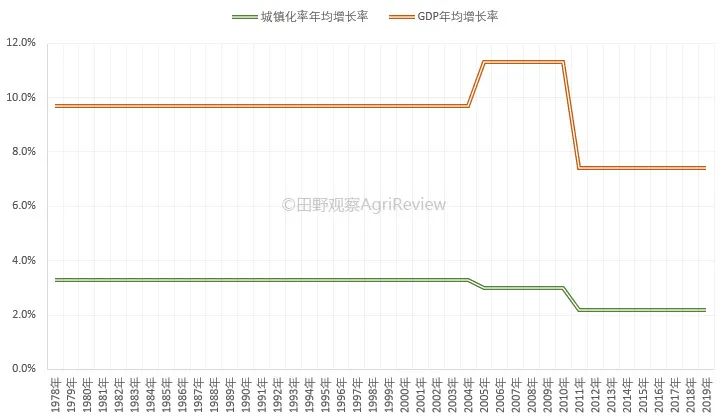
Slow down, trap or endogenous?
After 2010, China’s economic growth slowed down obviously. The arrival of lewis turning point and the disappearance of demographic dividend are one of the important factors, because the variables related to labor force in economic growth have negative growth, and the marginal income of investment has also declined.
In addition to the labor factor, the factors that often lead to the slowdown of economic growth are: the disappearance of late-comer advantage (the change from catch-up growth to cutting-edge growth), the sluggish domestic demand and unsustainable investment-driven growth, the crisis of middle-income trap, and the environmental constraints on future development caused by environmental damage caused by economic development.
However, at this turning point, there are also good factors to maintain the sustained economic growth. Some scholars believe that China’s reform has stepped out of the unique "China model" and can stimulate innovation, so that knowledge and technology can become the driving force for economic progress and enter the endogenous growth model.
So is the future good or bad? Maybe the answer lies in the land under our feet.
Opportunities from the perspective of agriculture
Agricultural development is welcoming two important changes, one is technical and the other is attribute. These two changes will bring new opportunities for economic development from a new perspective.
Technically, post-industrial agricultural technology is changing the petrochemical agricultural model.
Our modern agriculture, namely, Industrial Agriculture, is an important stage of world agricultural development after traditional agriculture. Petrochemical agriculture is characterized by consuming a lot of petroleum-based energy and raw materials, using a lot of fertilizers and pesticides, large-scale single planting or breeding, and a highly mechanized, automated and large-scale agricultural model.
Undeniably, this model has brought about a double increase in agricultural output in China, but at the cost of environmental pollution and degradation (ecological environment degradation, soil degradation, soil organic matter reduction, water pollution, agricultural greenhouse gas emissions and air pollution, etc.) and the unsustainability of high energy input model.
Agricultural technology in the post-industrial era is changing the unsustainability of petrochemical agriculture and the negative externalities of the environment in many ways.
There is no strict definition of agriculture in the post-industrial era. In terms of modes, such as ecological agriculture, biological agriculture, circular agriculture, organic agriculture, permanence agriculture, natural agriculture, forest agriculture and Regenerative agriculture, these are all attempts in this regard.
Although the early organic agriculture and natural agriculture left the impression of low yield and low efficiency, with the development of microbial technology, molecular biotechnology, ecological technology, information technology, complex systems and other technologies, agriculture in the post-industrial era is constantly improving productivity on the premise of sustainable development.
Take the application of microbial technology in soil improvement as an example: the industrialized agricultural model has caused soil fertility degradation, organic matter reduction, soil microbial degradation and other problems. This not only reduces the yield, but also reduces the soil organic matter, which also means increasing the greenhouse gas emissions. Using microbial technology can efficiently return straw to the field, improve soil organic matter, and restore healthy microbial population in the soil, which not only restores soil fertility, but also increases soil carbon sequestration and reduces greenhouse gas emissions.
In addition to the field of soil improvement, the development of microbial technology in anaerobic/aerobic fermentation has also greatly improved the efficiency of agricultural and domestic organic waste recycling, turning the garbage in industrial thinking into energy and fertilizer for agriculture in the post-industrial era.
There are biotechnology, such as biological nitrogen fixation; Ecological technology, such as making more use of biological natural enemies for pest management, treating weeds not with herbicides but with comprehensive management (even utilization); At the same time, modern information technology and artificial intelligence technology can more accurately fertilize and use drugs and reduce the waste of unsustainable resources.
On the whole, agricultural technology in the post-industrial era is constantly improving productivity on the premise of sustainable development.
Attribute: agriculture has changed from a single production attribute to a multi-functional attribute.
As an industry with the closest connection between man and nature, agriculture should have multiple functions, but it was only regarded as the production of agricultural products and means of production (pure production function) during the industrialization period. Agriculture should have social, economic and environmental functions besides production functions.
As early as the 1980s and 1990s, Japan and Europe began to actively promote MFA- Multifunctional Agriculture. UNEP The United Nations Environment Programme (UNEP) described multifunctional agriculture in its "Agriculture at the Crossroads: A Comprehensive Report" in 2009:
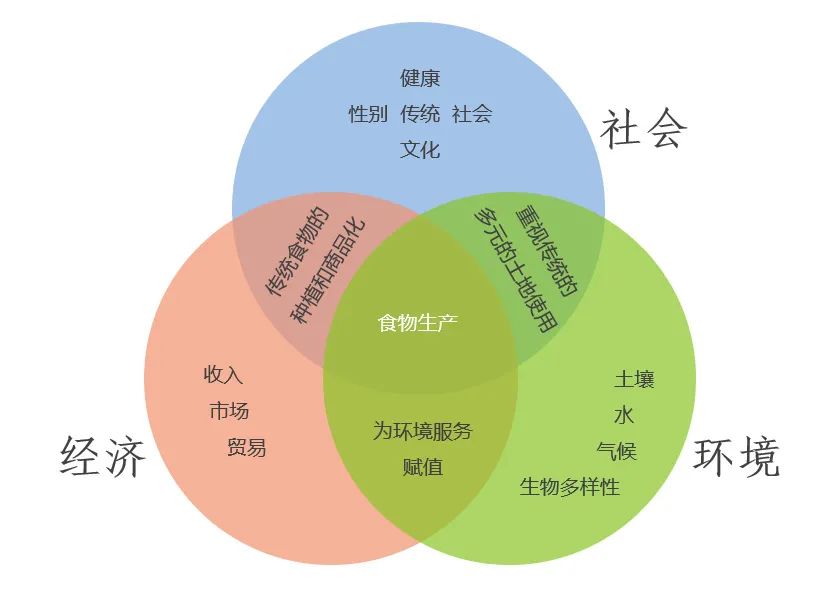
(Illustration: Multifunctional Agriculture Multifunctional Agriculture, IAASTD, UNEP)
Social function of agriculture: agriculture provides a healthy environment and food for the whole society, agriculture and rural areas are also the inheritance of social traditions and culture, and agriculture also plays the role of employment buffer and social stability.
The economic function of agriculture: the commercialization of crop output and its processed products, the primary and secondary production of agriculture, and the positive externalities created by agriculture can empower the economy.
The environmental functions of agriculture: soil, water, climate and biodiversity, which are not only the foundation of agriculture, but also the environment on which our human society depends. Agriculture can destroy the environment, and agriculture can also repair it.
China is a country with a large population. In the early days of the founding of the People’s Republic of China and the period of rapid economic development, the issue of grain output and food security has always been the primary issue of agricultural development. However, with the 12-year continuous increase of grain from 2003 to 2015, the self-sufficiency rate of grain reached 80-90%, and the output was no longer the main goal of agricultural development. We gradually began to pay attention to the social, economic and environmental functions of agriculture, and this trend can also be clearly seen from China’s agricultural policies and rural revitalization strategies in recent years.
The transformation of agricultural technology and attributes brings new opportunities for economic development.
Let’s go back to the economic growth function:
Economic growth function: Y=F(A,K,L),
Y stands for total output, which can be understood as GDP;; A stands for innovation, K stands for capital investment, and L stands for human capital. That is to say, economic growth is a function of innovation, capital and labor.
In the period of dual development, agriculture continuously provides human capital (L) for the development of industrial sectors, but after the Lewis turning point, at our present stage, agriculture will promote economic development by promoting social innovation (A) and form an endogenous growth model driven by technological innovation.
How does agriculture promote innovation? Focus on the environmental function of agriculture.
Sustainable agriculture combined with rational planning, rural areas (including suburbs and towns) have healthy soil, high-quality water, biodiversity and beautiful natural landscape.
The first is industries based on beautiful environment, such as rural tourism, pension, health care, natural education and other industries. Beautiful environment is not only the core assets of these industries, but also provides new competitive advantages and stimulates industry innovation.
Secondly, a good environment will attract those enterprises suitable for telecommuting to settle in villages (or towns). Compared with big cities, rural areas have better natural environment, lower living costs, slower pace of life and cheap and fresh ingredients, which makes some R&D departments such as IT enterprises or high-tech enterprises begin to consider or are moving enterprises/departments out of big cities and into villages/towns.
In fact, the headquarters of many high-tech enterprises in Europe and America are located in some humble towns. There is a famous rural Silicon Valley in Japan, which is located in the once-depressed village-Kamiyama-CHO. Now, many places in China have begun to take advantage of the rural environment to develop innovative industries, as well as rural Silicon Valley. This approach not only reduces the costs of enterprises and employees in many aspects, but also brings employees a healthier life. At the same time, a beautiful environment can stimulate the creativity of enterprises and individuals and inject innovative vitality into the whole economic development.
The so-called "Lucid waters and lush mountains are invaluable assets", a good environment is not only an asset in itself, but also can empower more industries and society, stimulate innovation, and form an endogenous growth model driven by innovation.
summary
In the early days of the founding of the People’s Republic of China, the progress of agriculture enabled us to get out of the Malthusian trap and the population doubled. However, due to the social system, a large number of people were stranded in the countryside and then involved.
With the reform and opening up and the activation of the system, a large number of surplus labor in agriculture has become a huge demographic dividend in the dual development model, achieving rapid growth for 30 years; When traveling to lewis turning point, the demographic dividend disappeared, and at the same time, with the retreat of late-comer advantage and environmental degradation, the growth slowed down;
The transformation of technology and attributes of agriculture brings new opportunities to China’s economy in the transition period. Sustainable agricultural technology can repair the environment. On the one hand, the environmental function of agriculture promotes economic growth with environmental capital, on the other hand, it stimulates innovation with environmental empowerment, thus forming an endogenous growth model driven by innovation.
References:
1. The most important thing for Cai Fang and China is to find new sources of growth.
2. Huang Zongzhi, "China’s hidden agricultural revolution"
3. ronald harry coase/Wang Ning, Transforming China: The Road to China in Market Economy.
4. the Central Committee of the Communist Party of China and the State Council, Rural Revitalization Strategic Plan (2018-2022).
5. Liang Jianzhang: Enlightenment of Paul Romer’s Nobel Prize in Economics to China.
6.World Bank and the United Nations Food and Agricultural Organization,《Agriculture at a Crossroads- International Assessment of Agricultural Knowledge,Science and Technology for Development》
[Introduction of titanium media author: Zheng Lun, founder of AgriReview of field observation, please send an email to 19222038@qq.com if you contact the author. 】
More exciting content, pay attention to titanium media micro-signal (ID: taimeiti), or download titanium media App.
